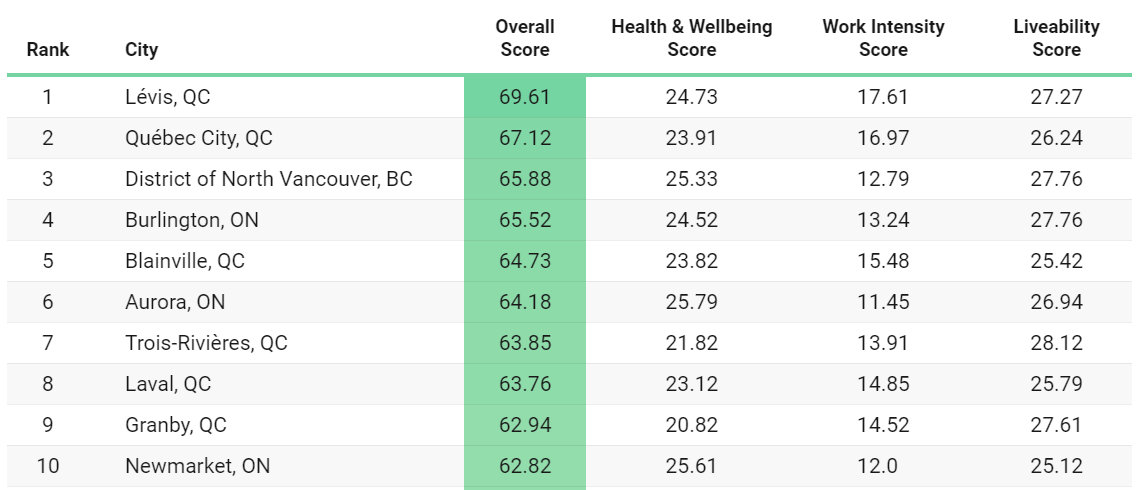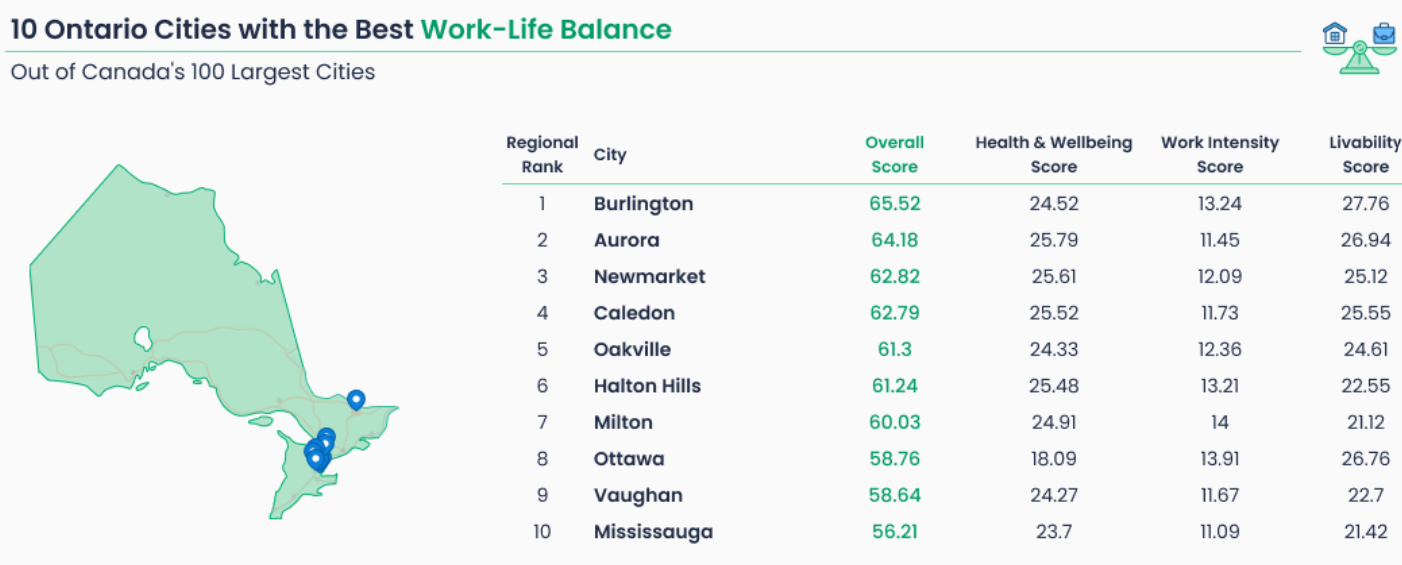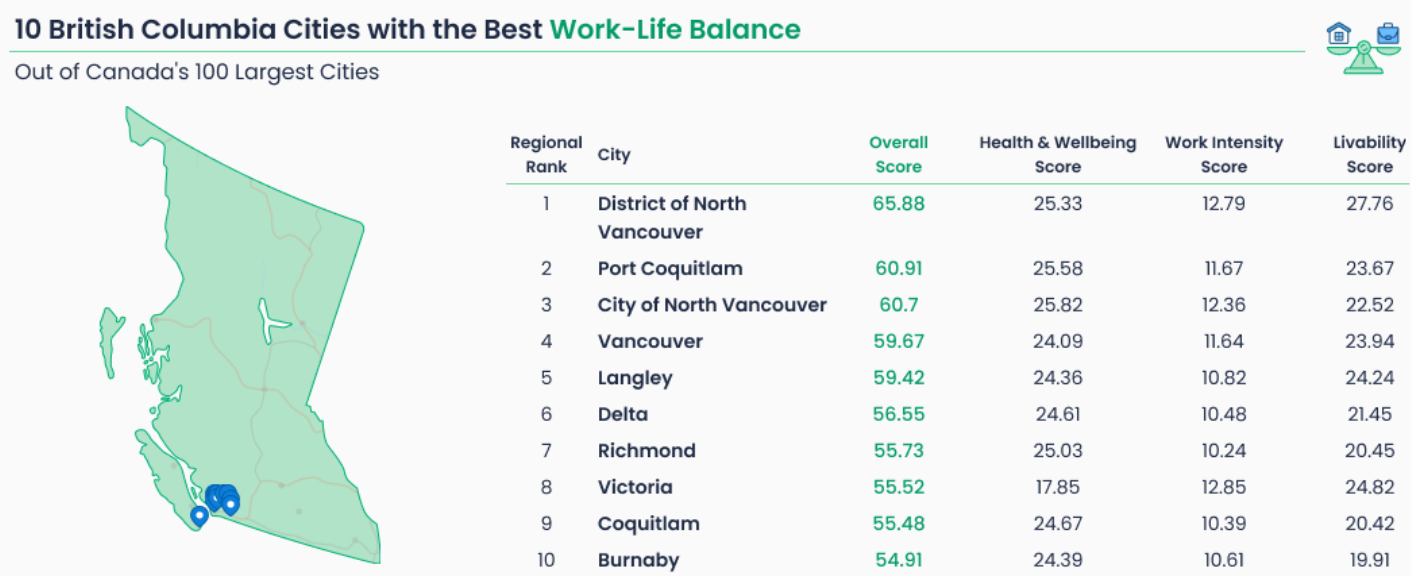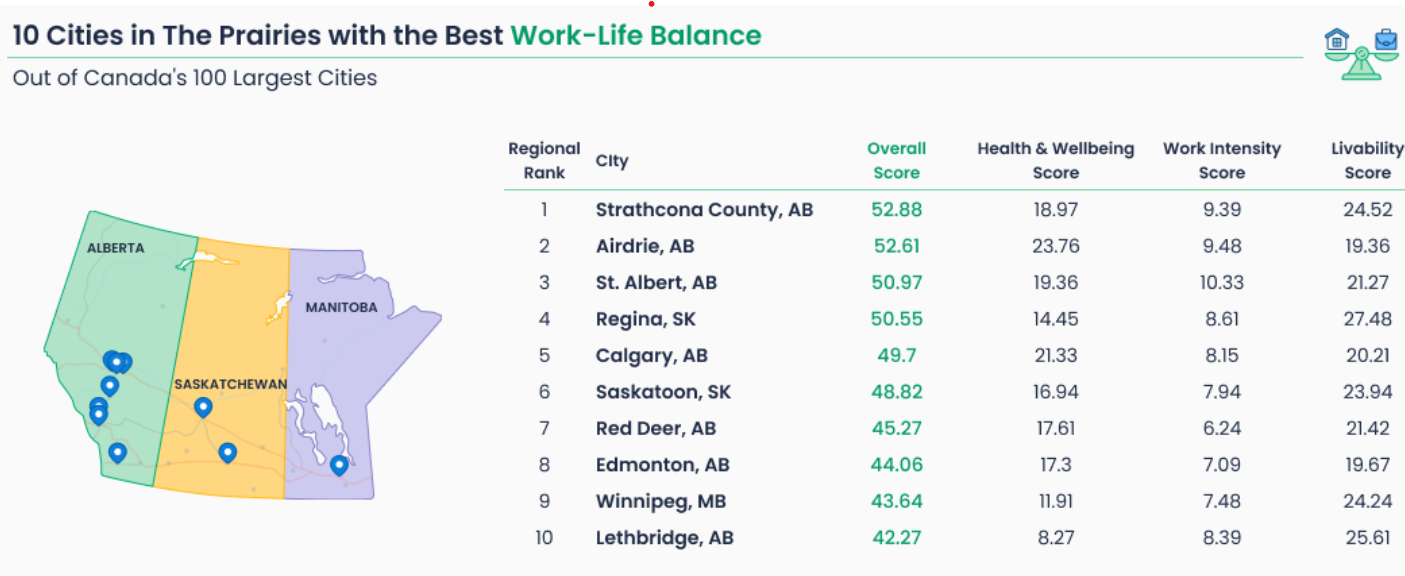
Report ranks cities based on work intensity, health & wellbeing, livability

Among the biggest cities in Canada, those in Quebec hold the most positions in the top 10 when it comes to work-life balance, according to a recent report.
The city of Levis, QC emerged as the top city in this category, garnering a total score of 69.61, according to Point2.
Levis’ total score is based on its scores on three groups of factors 24.73 for the health and wellbeing score, 17.61 for its work intensity score and 27.27 for its livability score.
“The tug of war between professional and personal life is influenced by lifestyle and economic factors that can foster juggling work responsibilities with home life in a way that keeps you healthy and fulfilled. Easier said than done as almost one-third of Canadians reported that work had interfered with their personal life in 2022,” said Alexandra Ciuntu in the Point2 report.
“Granted, achieving work-life balance is subjective and varies depending on individual preferences, lifestyle choices and, of course, career demands. From coast to coast, Canada’s largest cities manage to tick various boxes crucial to work-life harmony.”
Quebec City nabbed the second spot with a total score of 67.12.
Overall, there were six Quebec cities in the top 10 and two each from British Columbia and Ontario. And about 95% of residents in all of the Québec cities analyzed reported feeling satisfied with their lives overall.

Source: Point2
While Quebec employers might be emphasizing work-life balance for their workforce, many also would like workers back in the office more often, according to a previous report.
In Ontario, Burlington came out at the top of the list, according to Point2’s survey based on the following metrics:
“Burlington enjoys a balanced mix of positive health perceptions, with 93% of its residents reporting high levels of life satisfaction. Notably, the city boasts one of the lowest crime severities too,” said Ciuntu. “Not to be outdone, Aurora and Newmarket round out the podium and score high, particularly in terms of life expectancy and helpful numbers of medical specialists and general practitioners.”

Source: Point2
In B.C., the District of North Vancouver is the best at work-life balance. Residents here enjoy a $106,000 after-tax median household income, a reasonable cost of utilities compared to other big cities, and even good air quality, according to the report.

Source: Point2
In Atlantic Canada, St. John’s in Newfoundland and Labrador ranked first as it boasts of “remarkably high life satisfaction and perception of health — mental well-being included,” said Ciuntu.
“Most importantly, it’s the most stress-free city in the country: Fewer than 13% of its residents have reported that most days are quite a bit or extremely stressful.”
Lastly, among the Prairies, Strathcona County, AB, is the region’s best for work-life balance due to a mix of factors: Low crime severity, one of the highest after-tax median household incomes ($105,000), and the fact that more than 85% of residents spend less than 30% of their income on housing costs.

Source: Point2
Among hybrid workers, only 17% of employees have full control over how many and which days they will be in the office, according to a previous report.
Here are some workplace practices employers can adopt to ensure they’re supporting their employees to get the balance right, according to Sage’s Jessica Leyshon, director of HR research, insights and thought leadership:
Most (87%) professionals believe employers should trial “chronoworking” – where companies allow workers to choose work hours according to their natural sleeping pattern, according to a previous report.